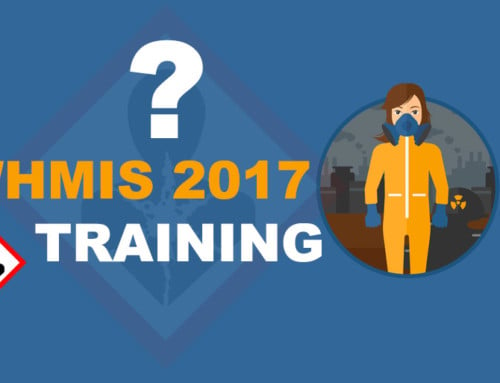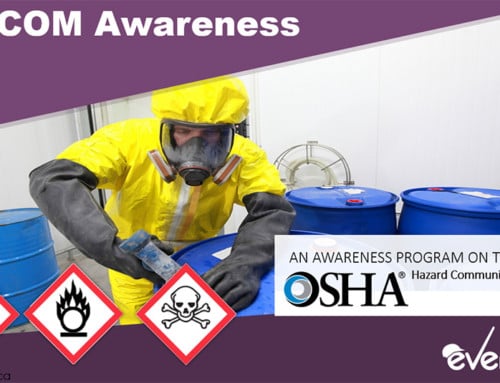JHSC Basics: Five Steps to Successful Workplace Safety Inspections
Workplace hazards are becoming increasingly complex with rapid technological advancements bringing changes to the everyday working environment. There are various levels of risk that need to be assessed. This is why implementing regular workplace safety inspections is a crucial part of an organization’s health and safety program.
One of the easiest ways to make inspections more effective is to utilize your company’s Joint Health and Safety Committee. A JHSC is designed specifically to enhance the safety of the workplace, and since the committee is comprised of supervisors and workers who have real time knowledge of the workspace, it is optimally placed to detect potential hazards. In some jurisdictions, it’s mandatory that JHSC take an active participation in periodic workplace inspections
There are many different types of safety inspections that are generally implemented in a workplace. These can include:
- Statutory compliance inspections executed by government officials
- Casual inspections that are executed by supervisors as part of their work routine
- Walk-through inspections that are implemented on a regular basis
This resource focuses on periodic workplace safety inspections carried out by an organization’s Joint Health and Safety Committee and give’s you five basic steps to ensure that success of your inspections.
STEP 1 – PLANNING AND SCHEDULING
There are no specific OHS rules by which a workplace safety inspection needs to be planned. There are stipulations in some jurisdictions that clearly define the interval at which the inspections need to be conducted, but mostly, the law simply states that regular inspections need to be conducted at “reasonable intervals.” The reason for this lack of clarity is that different workplaces vary greatly and so does the level of risk associated with a workplace area. The rule of thumb that is generally applied is that a workplace that has a JHSC should have the facility inspected at least once prior to each JHSC meeting.
The timing of the inspection needs to be fixed based on the workflow and convenience of the inspecting team members. Inspection teams should include worker reps, a safety professional management reps, and JHSC members. The inspection team can include people with expertise in different fields such as an engineer or industrial hygienist depending on the nature of the workplace. Whatever be the case, it is also optimal that the team be comprised of a small group of individuals.
In normal circumstances, the whole workplace should be subjected to inspection at least on a monthly basis. However, some workplaces have extremely high risk areas that need to be inspected on a more frequent basis. The inspection strategy needs to be worked out depending on the size of the workplace and the level of risk.

STEP 2 – PREPARATION
It is essential that the members of the inspection team have adequate training and orientation in regard to conducting an inspection. This ensures that the inspection is implemented efficiently and all potential hazards are identified. Certain jurisdictions provide training courses that educate members on the process of conducting inspections. In certain jurisdictions, the inspection team members are strictly required to undergo training in general workplace hazards as well as specific hazards associated with a specific industry. For example, certain Canadian JHSC members must complete the required Canada Safety Training in order to become certified.
Prior to a workplace inspection, the members of the team may review the following elements :
- Pertinent safety laws and stipulations, especially most current legal requirements or hazard warnings issued by governing agencies or officers
- Previous JHSC meeting minutes
- Prior inspection reports
- A comprehensive report on any incidents that have occurred since the last inspection was conducted
STEP 3 – IMPLEMENTATION
The primary objective of the inspection is to identify potential causative factors for any kind of physical injury or disease conditions at the work place. This would include the following:
- Infrastructure components such as doors, windows, HVAC systems, loading docks, storage racks parking lots, flooring, and fire exits
- Industrial equipment, tools, and machinery
- Constricted spaces
- The handling and storage of materials in and around the workplace
- Workers
- Faulty procedures that are ineffective or can cause injury to workers
- Newly introduced hazards such as cords that could cause tripping over
- Workstations installed at awkward or non-ergonomic positions
- Previously identified hazards that have not been addressed
The members of the inspecting team need to be fully alert and keep their eyes and ears open for all potential hazards. It’s also very helpful if they talk to base employees and supervisors and take note of any safety concerns that they might have. It’s important to establish and maintain a healthy bridge of conversation with the workers, so that they feel comfortable in expressing their concerns and providing suggestions to improve the health and safety within the workplace. The inspection team members may also have the responsibility to confirm that workers are familiar with first aid and other emergency procedures being implemented at the workplace where required.

STEP 4 – DOCUMENTATION
Optimally, an inspection report, or other means to record any hazards encountered, should be used to document the results of the inspection. By maintaining a detailed record of the inspection, what safety hazards were identified, when they were identified, and the steps taken to address the hazard, the employer can prove that it has performed due diligence in the scenario that it may be required to do so.
The inspection results should contain the following information:
- Departments or sections of the workplace that were inspected
- Time and date of inspection
- Participating members of the inspection
- Areas, processes, machinery, and other items that were found to be potential hazards
- The record of identified hazards
- Whether the hazards unaddressed from previous inspections
- Recommendations to address the issues
STEP 5 – FOLLOWUP
This is the most crucial aspect of the inspection. Once the inspection has been completed and potential hazards have been identified, the employer is obligated to take necessary and immediate action to address these issues. Therefore, there needs to be a record of the inspecting team informing the employer about potential hazards and possibly suggestions on how to solve the issues and make the workplace hazard free. The employer, safety professional, department heads, and anyone else responsible for the safety of the workforce need to get a copy of the inspection report to help them identify and address the issues at hand.
Reduce Risk with Workplace Safety Inspections
The top priority of any Joint Health and Safety inspection is to assist in eliminating or significantly reduce the chance of injury and incidents, and ultimately improve the safety and health conditions of the workplace. The five steps above are a great place to start to ensure that you’re getting the most out of your JHSC and your regularly scheduled safety inspections.
Joint Health and Safety Committee Resources
Articles
Joint Health and Safety Committees: An Introduction
Free Tools
JHSC Inspection Form (WSPS)






